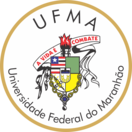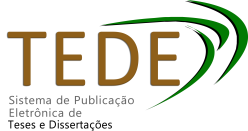| Compartilhamento |


|
Use este identificador para citar ou linkar para este item:
https://tedebc.ufma.br/jspui/handle/tede/6030Registro completo de metadados
| Campo DC | Valor | Idioma |
|---|---|---|
| dc.creator | NEVES, Mônica Araujo das | - |
| dc.creator.Lattes | http://lattes.cnpq.br/0990040079658492 | por |
| dc.contributor.advisor1 | ROCHA, Cláudia Quintino da | - |
| dc.contributor.advisor1Lattes | http://lattes.cnpq.br/5609489233382242 | por |
| dc.contributor.referee1 | ROCHA, Cláudia Quintino da | - |
| dc.contributor.referee1Lattes | http://lattes.cnpq.br/5609489233382242 | por |
| dc.contributor.referee2 | FIGUEREDO, Gilvan Pereira de | - |
| dc.contributor.referee2Lattes | http://lattes.cnpq.br/3730724432445516 | por |
| dc.contributor.referee3 | CAVALCANTE, Kiany Sirley Brandão | - |
| dc.contributor.referee3Lattes | http://lattes.cnpq.br/3810732989135120 | por |
| dc.contributor.referee4 | FURTINI, Josy Anteveli Osajima | - |
| dc.contributor.referee4Lattes | http://lattes.cnpq.br/4805147682740024 | por |
| dc.contributor.referee5 | PEREIRA, Paulo Vitor Soeiro | - |
| dc.contributor.referee5Lattes | http://lattes.cnpq.br/7281767698416958 | por |
| dc.date.accessioned | 2025-03-27T10:56:15Z | - |
| dc.date.issued | 2025-02-06 | - |
| dc.identifier.citation | NEVES, Mônica Araujo das. Desenvolvimento e caracterização de bioprodutos oriundos de Fridericia platyphylla (CHAM.) L.G. LOHMANN atuando em Leishmaniose. 2025. 135 f. Tese(Programa de Pós-Graduação Doutorado em Química (ASSOCIADO UFMA-IFMA) - Universidade Federal do Maranhão, São Luís, 2025. | por |
| dc.identifier.uri | https://tedebc.ufma.br/jspui/handle/tede/6030 | - |
| dc.description.resumo | As leishmanioses são doenças parasitárias negligenciadas causadas por protozoários do gênero Leishmania, representando um grave problema de saúde pública global. As terapias disponíveis são limitadas a poucos fármacos, como o antimoniato de meglumina, anfotericina B e miltefosina, todos associados a elevada toxicidade, altos custos e crescente resistência parasitária. Nesse contexto, a busca por novos compostos bioativos com maior seletividade e menor toxicidade torna-se essencial. Este trabalho apresenta a primeira evidência de que as braquidinas presentes na fração diclorometano (FDCM) de Fridericia platyphylla inibem a enzima triosefosfato isomerase (TIM) de Leishmania, afetando sua estabilidade e função catalítica. Essa descoberta abre novas perspectivas para o entendimento dos mecanismos moleculares da leishmaniose e para o desenvolvimento de novos fármacos. Experimentalmente, a FDCM apresentou atividade inibitória contra promastigotas de L. infantum, L. braziliensis e L. mexicana, com IC₅₀ de 10,13, 11,44 e 11,16 µg/mL, respectivamente, e contra amastigotas intracelulares de L. infantum (IC₅₀ = 4,81 µg/mL). Além disso, demonstrou um perfil de citotoxicidade moderada para macrófagos RAW264.7 (CC₅₀ = 25,15 µg/mL), com índice de seletividade (SI = 5,2), superior ao do antimoniato de meglumina (SI = 2,7), porém inferior ao da anfotericina B (SI = 41,5), sugerindo um potencial terapêutico viável. A fim de otimizar sua aplicação farmacêutica, a FDCM foi encapsulada em nanopartículas poliméricas de zeína (NPZ-FDCM) e poli(-caprolactona) (NPCL-FDCM). A NPZ-FDCM apresentou elevada eficiência de encapsulação (~99%), distribuição homogênea de tamanho e estabilidade por 49 dias, além de potencial zeta adequado para estabilidade coloidal. No ensaio antileishmanial, a NPZ-FDCM demonstrou maior eficácia contra formas amastigotas de L. amazonensis (IC₅₀ = 0,72 µg/mL), enquanto a NPCL-FDCM não exibiu atividade significativa na concentração testada. Os achados deste estudo evidenciam a FDCM como uma alternativa promissora aos fármacos convencionais, combinando elevada seletividade, menor toxicidade e baixo impacto ambiental. A encapsulação em nanopartículas de zeína potencializa sua eficácia, reforçando seu potencial como candidato inovador para o tratamento da leishmaniose. | por |
| dc.description.abstract | Leishmaniasis is a neglected parasitic disease caused by protozoa of the Leishmania genus, representing a serious global public health problem. Available therapies are limited to a few drugs, such as meglumine antimoniate, amphotericin B, and miltefosine, all associated with high toxicity, high costs, and increasing parasite resistance. In this context, the search for new bioactive compounds with greater selectivity and lower toxicity becomes essential. This study presents the first evidence that brachydins present in the dichloromethane fraction (FDCM) of Fridericia platyphylla inhibit the triosephosphate isomerase (TIM) enzyme of Leishmania, affecting its stability and catalytic function. This discovery opens new perspectives for understanding the molecular mechanisms of leishmaniasis and developing new drugs. Experimentally, FDCM exhibited inhibitory activity against promastigotes of L. infantum, L. braziliensis, and L. mexicana, with IC₅₀ values of 10.13, 11.44, and 11.16 µg/mL, respectively, and against intracellular amastigotes of L. infantum (IC₅₀ = 4.81 µg/mL). Furthermore, it demonstrated a moderate cytotoxicity profile for RAW264.7 macrophages (CC₅₀ = 25.15 µg/mL), with a selectivity index (SI = 5.2), higher than that of meglumine antimoniate (SI = 2.7) but lower than that of amphotericin B (SI = 41.5), suggesting a viable therapeutic potential. To optimize its pharmaceutical application, FDCM was encapsulated in zein polymeric nanoparticles (NPZ-FDCM) and poly(- caprolactone) nanoparticles (NPCL-FDCM). NPZ-FDCM showed high encapsulation efficiency (~99%), homogeneous size distribution, and stability for 49 days, along with a suitable zeta potential for colloidal stability. In the anti-leishmanial assay, NPZ-FDCM demonstrated greater efficacy against amastigote forms of L. amazonensis (IC₅₀ = 0.72 µg/mL), whereas NPCL-FDCM did not exhibit significant activity at the tested concentration. The findings of this study highlight FDCM as a promising alternative to conventional drugs, combining high selectivity, lower toxicity, and reduced environmental impact. Encapsulation in zein nanoparticles enhances its efficacy, reinforcing its potential as an innovative candidate for leishmaniasis treatment. | eng |
| dc.description.provenance | Submitted by Maria Aparecida (cidazen@gmail.com) on 2025-03-27T10:56:15Z No. of bitstreams: 1 MÔNICA ARAUJO DAS NEVES.pdf: 8421558 bytes, checksum: ba5de5b4401572c4deb9551efe0e47bf (MD5) | eng |
| dc.description.provenance | Made available in DSpace on 2025-03-27T10:56:15Z (GMT). No. of bitstreams: 1 MÔNICA ARAUJO DAS NEVES.pdf: 8421558 bytes, checksum: ba5de5b4401572c4deb9551efe0e47bf (MD5) Previous issue date: 2025-02-06 | eng |
| dc.format | application/pdf | * |
| dc.language | por | por |
| dc.publisher | Universidade Federal do Maranhão | por |
| dc.publisher.department | DEPARTAMENTO DE QUÍMICA/CCET | por |
| dc.publisher.country | Brasil | por |
| dc.publisher.initials | UFMA | por |
| dc.publisher.program | PROGRAMA DE PÓS-GRADUAÇÃO DOUTORADO EM QUÍMICA (ASSOCIADO UFMA-IFMA) | por |
| dc.rights | Acesso Aberto | por |
| dc.subject | doenças negligenciadas; | por |
| dc.subject | brachydinas; | por |
| dc.subject | nanofármacos; | por |
| dc.subject | leishmaniose; | por |
| dc.subject | neglected diseases; | eng |
| dc.subject | brachydins; | eng |
| dc.subject | nanopharmaceuticals; | eng |
| dc.subject | leishmaniasis. | eng |
| dc.subject.cnpq | Farmacologia Clínica | por |
| dc.title | Desenvolvimento e caracterização de bioprodutos oriundos de Fridericia Platyphylla (cham.) L.G. Lohmann atuando em leishmaniose | por |
| dc.title.alternative | Development and characterization of bioproducts from Fridericia platyphylla (CHAM.) L.G. LOhann acting on leishmaniasis | eng |
| dc.type | Tese | por |
| Aparece nas coleções: | TESE DE DOUTORADO - PROGRAMA DE PÓS-GRADUAÇÃO DOUTORADO EM QUÍMICA (ASSOCIADO UFMA-IFMA) | |
Arquivos associados a este item:
| Arquivo | Descrição | Tamanho | Formato | |
|---|---|---|---|---|
| MÔNICA ARAUJO DAS NEVES.pdf | Tese de Doutorado | 8,22 MB | Adobe PDF | Baixar/Abrir Pré-Visualizar |
Os itens no repositório estão protegidos por copyright, com todos os direitos reservados, salvo quando é indicado o contrário.




